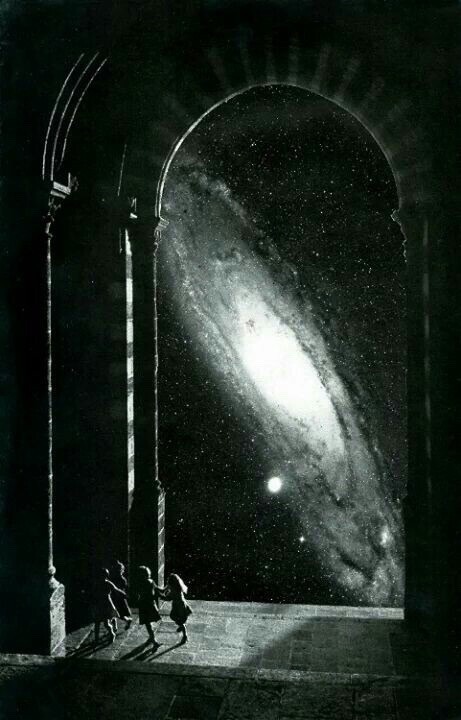Free Cake! Free Cake!
Free cake! Free cake!

Don’t miss a jolly good episode of Regular Show tonight at 6pm/5c!
(🍰: Camylle Carrizales)
More Posts from Sweetteadivination-blog and Others
That moment when you realize Sour Cream was concieved in the back of Greg's van.
This picture gave me the feels.

Love the universe.

As a father, this rings true to me.

The best 😁 Happy National Video Games Day!


One of my Sims, Miranda Marlow~
Haha

One of my favorites growing up.
10 times Animaniacs was low key giving you an education
The countries of the world, as well as the states and capitals of the United States
All the planets in our solar system (before Pluto was rejected downgraded), as well as the scale of space
All the senses – and homonyms
Healthy eating – or rather, all the preservatives and chemicals in processed foods
All the presidents of the United States (up through Bill Clinton)
And who could forget the international friendship song or these 4 others.



Alex Grey
What’s Up for February 2016?
Five morning planets, Comet Catalina passes Polaris and icy Uranus and icy Vesta meet near Valentine’s Day.

February mornings feature Mercury, Venus, Saturn, Mars and Jupiter. The last time this five-planet dawn lineup happened was in 2005. The planets are easy to distinguish when you use the moon as your guide. Details on viewing HERE.
If you miss all five planets this month, you’ll be able to see them again in August’s sunset sky.

Last month, Comet Catalina’s curved dust tail and straight ion tail were visible in binoculars and telescopes near two galaxies that are close to the handle of the Big Dipper. Early this month, the comet nears Polaris, the North Star. It should be visible all month long for northern hemisphere observers.

There will be more opportunities to photograph Comet Catalina paired with other objects this month. It passes the faint spiral galaxy IC 342 and a pretty planetary nebula named NGC 1501 between Feb. 10 – 29. For binocular viewers, the magnitude 6 comet pairs up with a pretty string of stars, known as Kemble’s Cascade, on Feb. 24.

Finally, through binoculars, you should be able to pick out Vesta and Uranus near one another this month. You can use the moon as a guide on Feb. 12, and the cornerstone and the corner stars of Pegasus all month long.

For more information about What’s Up in the February sky, watch our monthly video HERE.
Make sure to follow us on Tumblr for your regular dose of space: http://nasa.tumblr.com
-
 instanttyrantluminary liked this · 1 year ago
instanttyrantluminary liked this · 1 year ago -
 galaksininkirmizisi liked this · 6 years ago
galaksininkirmizisi liked this · 6 years ago -
 natii-comida-deporte liked this · 6 years ago
natii-comida-deporte liked this · 6 years ago -
 weirdagnes liked this · 6 years ago
weirdagnes liked this · 6 years ago -
 inexplicable-infatuation liked this · 7 years ago
inexplicable-infatuation liked this · 7 years ago -
 coralchildloveml-blog liked this · 7 years ago
coralchildloveml-blog liked this · 7 years ago -
 what-da-funkk liked this · 7 years ago
what-da-funkk liked this · 7 years ago -
 sheis-curiosity-blog reblogged this · 8 years ago
sheis-curiosity-blog reblogged this · 8 years ago -
 sheis-curiosity-blog liked this · 8 years ago
sheis-curiosity-blog liked this · 8 years ago -
 suzandelgado liked this · 8 years ago
suzandelgado liked this · 8 years ago -
 el-mundo-de-juanito-arcoiris reblogged this · 8 years ago
el-mundo-de-juanito-arcoiris reblogged this · 8 years ago -
 el-mundo-de-juanito-arcoiris liked this · 8 years ago
el-mundo-de-juanito-arcoiris liked this · 8 years ago -
 manquisimo-manco reblogged this · 8 years ago
manquisimo-manco reblogged this · 8 years ago -
 a-dark-w0rld reblogged this · 8 years ago
a-dark-w0rld reblogged this · 8 years ago -
 marinepia liked this · 8 years ago
marinepia liked this · 8 years ago -
 mlp-fever liked this · 8 years ago
mlp-fever liked this · 8 years ago -
 neue-haas-grotesk liked this · 8 years ago
neue-haas-grotesk liked this · 8 years ago -
 jordangreenart liked this · 8 years ago
jordangreenart liked this · 8 years ago -
 otgwblog liked this · 8 years ago
otgwblog liked this · 8 years ago -
 aliyahdandrea liked this · 8 years ago
aliyahdandrea liked this · 8 years ago -
 nighty3000bg-blog liked this · 8 years ago
nighty3000bg-blog liked this · 8 years ago -
 purpleguybulgaria10-blog liked this · 8 years ago
purpleguybulgaria10-blog liked this · 8 years ago -
 redwolftrash liked this · 8 years ago
redwolftrash liked this · 8 years ago -
 itz-questiony-blog liked this · 8 years ago
itz-questiony-blog liked this · 8 years ago -
 mizuki-mizu liked this · 8 years ago
mizuki-mizu liked this · 8 years ago -
 antisora13 reblogged this · 8 years ago
antisora13 reblogged this · 8 years ago -
 antisora13 liked this · 8 years ago
antisora13 liked this · 8 years ago -
 feurdelis liked this · 8 years ago
feurdelis liked this · 8 years ago -
 feurdelis reblogged this · 8 years ago
feurdelis reblogged this · 8 years ago -
 flufflepops reblogged this · 8 years ago
flufflepops reblogged this · 8 years ago -
 nikool-art liked this · 8 years ago
nikool-art liked this · 8 years ago -
 goregeousley liked this · 8 years ago
goregeousley liked this · 8 years ago -
 qknala liked this · 8 years ago
qknala liked this · 8 years ago -
 crewknight liked this · 8 years ago
crewknight liked this · 8 years ago -
 voltron-shiro liked this · 8 years ago
voltron-shiro liked this · 8 years ago -
 hglovesmusic liked this · 8 years ago
hglovesmusic liked this · 8 years ago -
 blitzsaturn liked this · 8 years ago
blitzsaturn liked this · 8 years ago -
 vegeisanunicorn liked this · 8 years ago
vegeisanunicorn liked this · 8 years ago -
 itsourwarzone-babe liked this · 8 years ago
itsourwarzone-babe liked this · 8 years ago -
 cronocoronel liked this · 8 years ago
cronocoronel liked this · 8 years ago